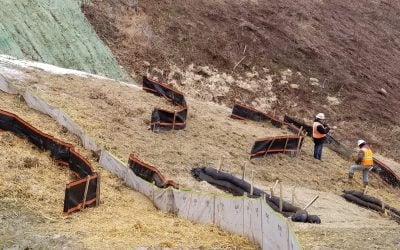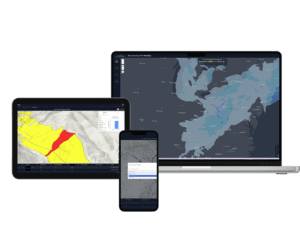In this post, we will take a look at how proposed regulations for gas gathering lines are marching toward the rule-making finish line, signaling a moment to consider aerial technology to support compliance initiatives.
Executive Summary
Risks associated with gas gathering lines have increased in recent years. PHMSA proposed gas gathering line rule-making and recently sought input from the Gas Pipeline Advisory Committee (GPAC) for the development of the final rule. GPAC recommended a set of minimum safety standards for gas gathering lines greater than 8.625 inches; detailed annual and incident-based reporting; and application of the potential impact radius (PIR) methodology for larger-diameter gas gathering lines.
Gas Gathering Line Rule-making

Gathering lines are pipelines used to transport oil or natural gas from the original site of production to another facility for further refinement or to transmission pipelines. Gathering operations have historically been low pressure, small-diameter systems that posed little risk to public safety and thus drew little regulatory oversight. In recent years, however, shale gas development has greatly increased the use of higher pressure, larger diameter gathering lines, and to date there are an estimated 91,000 miles of gathering pipelines that are unregulated in the U.S. These conditions combine to heighten the risks associated with gas gathering lines.
In response to statutory obligations and growing concerns regarding gathering lines, the federal Pipeline and Hazardous Materials Safety Administration (PHMSA) proposed extensive rule-making in 2016 titled Safety of Gas Transmission and Gathering Pipelines, also known as the “gas mega rule.” Since then, the sweeping proposal has been split into three separate rule-makings, one of which is dedicated to gas gathering lines.
The proposed gas gathering rule is now in the process of clearing its final rule-making hurdles before taking effect. Among the milestones passed in this process was a recent review with recommendations by the Gas Pipeline Advisory Committee.
Gas Pipeline Advisory Committee Recommendations
The Gas Pipeline Advisory Committee (GPAC) is a statutorily-mandated committee that advises PHMSA on proposed gas pipeline safety standards and their associated feasibility and impacts. GPAC met in late June 2019 to discuss and provide PHMSA with feedback on its proposed gas gathering line rule. If PHMSA incorporates GPAC’s recommendations into the final rule, operators will be required to:
- Follow a minimum set of requirements for gathering lines 8.625 inches in diameter and greater, including standards for design, construction, inspection, and damage prevention;
- Submit specific location and causal information in incident report forms; and
Apply the potential impact radius (PIR) methodology to provide safety and environmental protections for larger-diameter gathering lines (i.e., greater than 12.75 inches). - GPAC also recommended a 24-month adjustment period for compliance with proposed annual reporting requirements.
What’s next?
With consideration given to GPAC’s recommendations, PHMSA is currently developing a draft of the final gas gathering line rule for internal review by the agency and the Department of Transportation (DOT). Next, the draft final rule will be reviewed by the Office of Management and Budget before being approved and published. The DOT anticipates the final rule to take effect in mid-2020.
As the new gas gathering line rule works its way toward the finish line, currently unregulated gathering line operators should proceed with a thorough review of forthcoming regulatory obligations and develop a sound strategy for ensuring compliance. Adopting an aerial imagery program with analytics built for midstream oil and gas will be a boon for compliance and working forward with regulatory agencies.


How can Teren help you?
We'd love to hear from you.
- Ready to dive deeper? -
Knowledge Hub
White Papers
Webinars